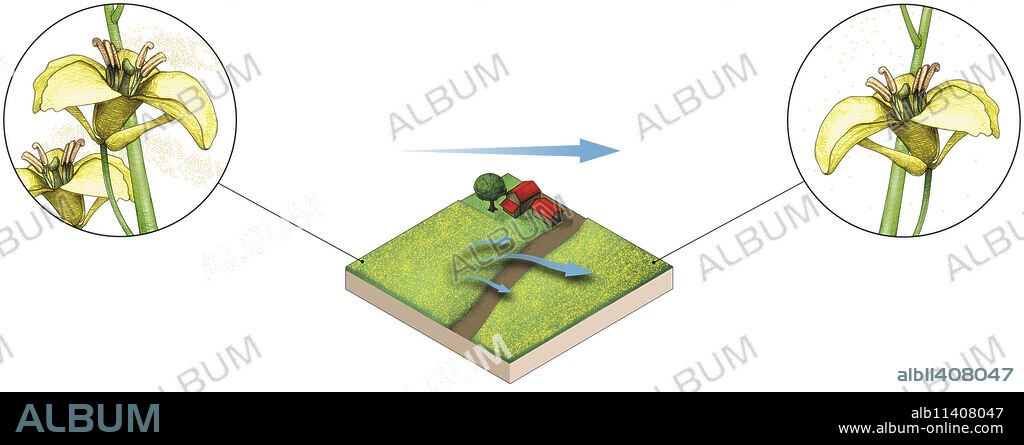alb11408047
Anemophilous pollination, Illustration

|
Add to another lightbox |
|
Add to another lightbox |



Buy this image.
Select the use:

Title:
Anemophilous pollination, Illustration
Caption:
Flowers pollinated by the wind are generally discreet and not very attractive to insects. Transportation of pollen by the wind is relatively ineffective: a low proportion of the pollen grains made by a flower actually reach the stigma of another flower. Certain plants have adapted to the random nature of anemophilous pollination by producing enormous quantities of pollen with small, light, smooth, dry grains. The wind disperses the pollen over a vast territory. Most pollen grains are lost while being transported in this haphazard way. Few of them manage to fertilize another flower.
Credit:
Album / Science Source / QA International
Releases:
Image size:
2400 x 918 px | 6.3 MB
Print size:
20.3 x 7.8 cm | 8.0 x 3.1 in (300 dpi)
Keywords:
ANEMOPHILOUS • ART • ARTWORK • COLOR • COLORS • COLOUR • COLOURS • DIAGRAM • DRAWING • DRAWINGS • FLUSH • ILLUSTRATION • ILLUSTRATIONS • ILUSTRATION • PLANT • PLANTA • PLANTAE • PLANTS • POLINIZACION • POLLINATED • POLLINATING • POLLINATION • POLLINIZATION


 Pinterest
Pinterest Twitter
Twitter Facebook
Facebook Copy link
Copy link Email
Email
